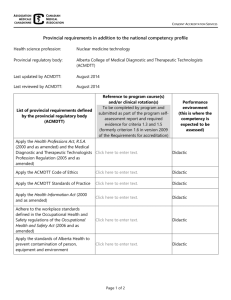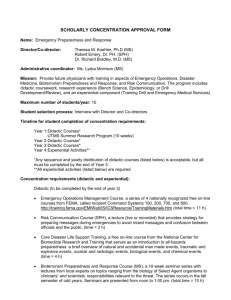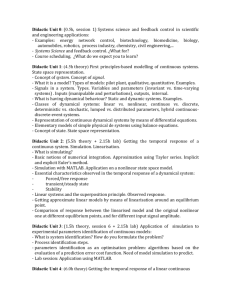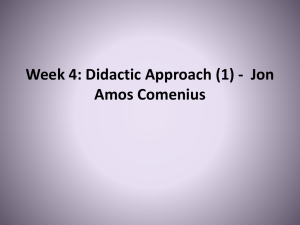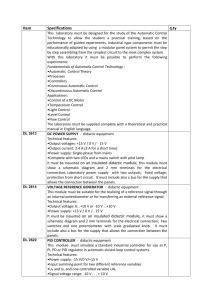1a. Module 1 - Unit 2 - Didactic Approach - MEIS
advertisement
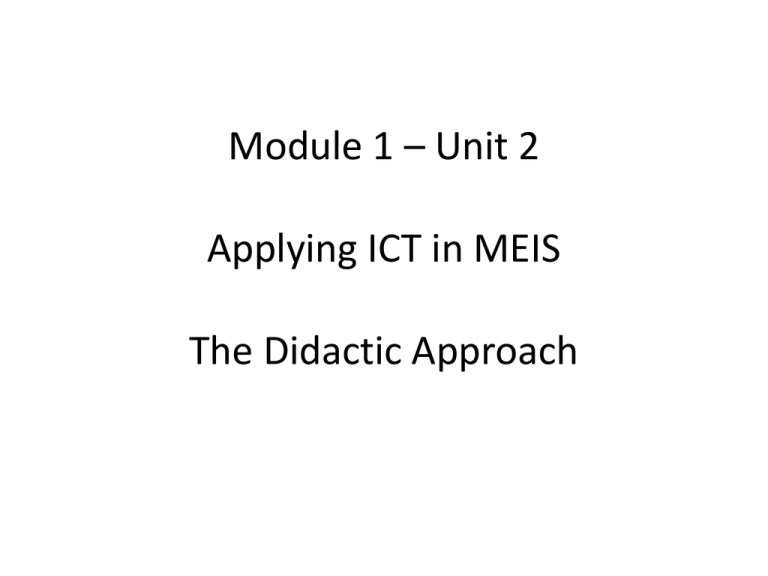
Module 1 – Unit 2 Applying ICT in MEIS The Didactic Approach The Didactic Approach Didactic Teaching The Didactic Classroom What the Teacher Does Identifies desired learning outcomes and selects tasks accordingly Presents information Models procedures or techniques Orchestrates activities and manages behaviour Asks questions to check understanding and recall of information Selects assessment foci and creates assessments to check understanding and recall Feeds results and comments on performance back to students (through marking or verbal comments) What the Students Do Follow the teacher's plan and do preselected tasks as required Read, watch or listen to new learning content Observe and then copy or imitate Do as told (or not) Try to recall the information they received to answer questions Prepare for assessment by revising previously learned, pre-selected information Listen to or read feedback and (possibly) try again Didactic Lesson Structure • • • • • • • • • • • Step 1: The ‘Hook’. The teacher evokes a stimulus of some type such as a story, an activity or a question designed to engage the students’ attention and interest. Step 2: Lesson Objectives Shared The teacher identifies the lesson objectives or outcomes and shows how these fit into the overall learning plan. Step 3: Teacher Input The teacher provides necessary information, skills, procedures, etc. Step 4: Student Activities Students are given an opportunity to engage with the content/skills, usually through a set of activities in order internalise the information or behaviours. Step 5: Learning Check Actual learning against the objectives is checked through a series of formative assessment opportunities. Teacher ascertains needs for both support interventions and/or extension work. Step 6: Review Students and teacher interact to summarise important points of the lesson. Typical Activities in a Didactic Lesson • Teacher exposition (Steps 1-3) • Student processing (Step 4) • Teacher and students monitor progress (Steps 5-6). Key Point A didactic method is a teaching method that follows a consistent scientific approach or educational style to engage the student’s mind. (Wikipedia) Activity 1 - Didactic Lesson Coding 6 groups identify and code didactic elements in the MEIS Lesson Plans Maths Didactic Codes English Science Hook, Objectives, T-input, S-activities, L-Check, Review Activity 2 – Didactic Lesson Plan Developing a Didactic Lesson that is TPACK Compliant Groups in Subject Teams • In your teams look at your subject area syllabus. • Choose a topic. • Identify curriculum objectives that you think can be achieved during a didactic lesson on this topic. • Think about the different steps of didactic activities and resources you might use to develop your learners in this topic. • Now develop the teacher and student activities for each step of the Didactic approach. • List all the resources you will need for each activity. • Use the planning template for your team subject area to develop your lesson plan. Output and Presentation of Output • Groups will exchange lesson plans with other group in their subject area for review using the lesson review tool • Groups revise lesson plans based on group review • Feedback in Plenary • Diary Reflection • Daily Evaluation Final Outputs - Portfolio Maths English Science Didactic Lesson coding Maths Didactic coded lesson English Didactic coded lesson Science Didactic coded lesson Didactic lesson plans Maths TPACK Compliant didactic lesson plan English TPACK Compliant didactic lesson plan Science TPACK Compliant didactic lesson plan


